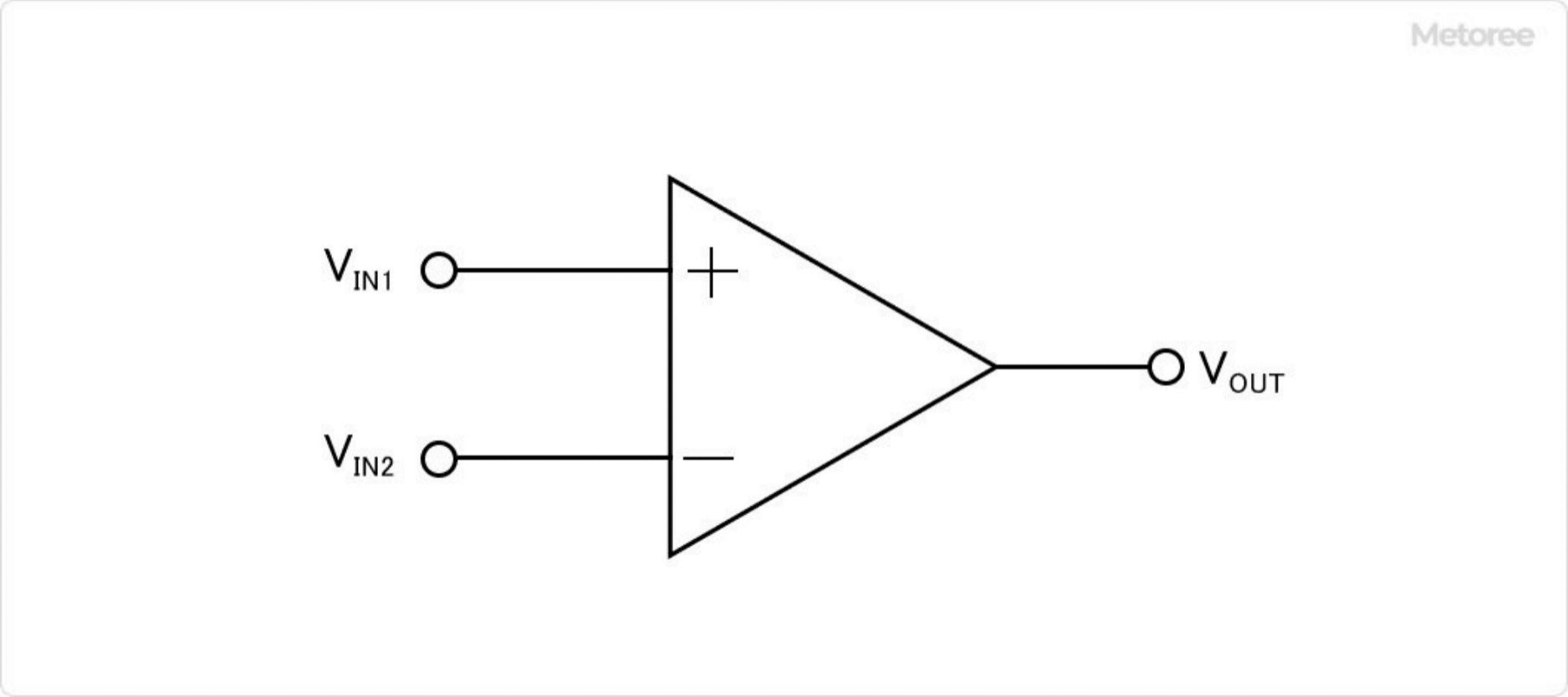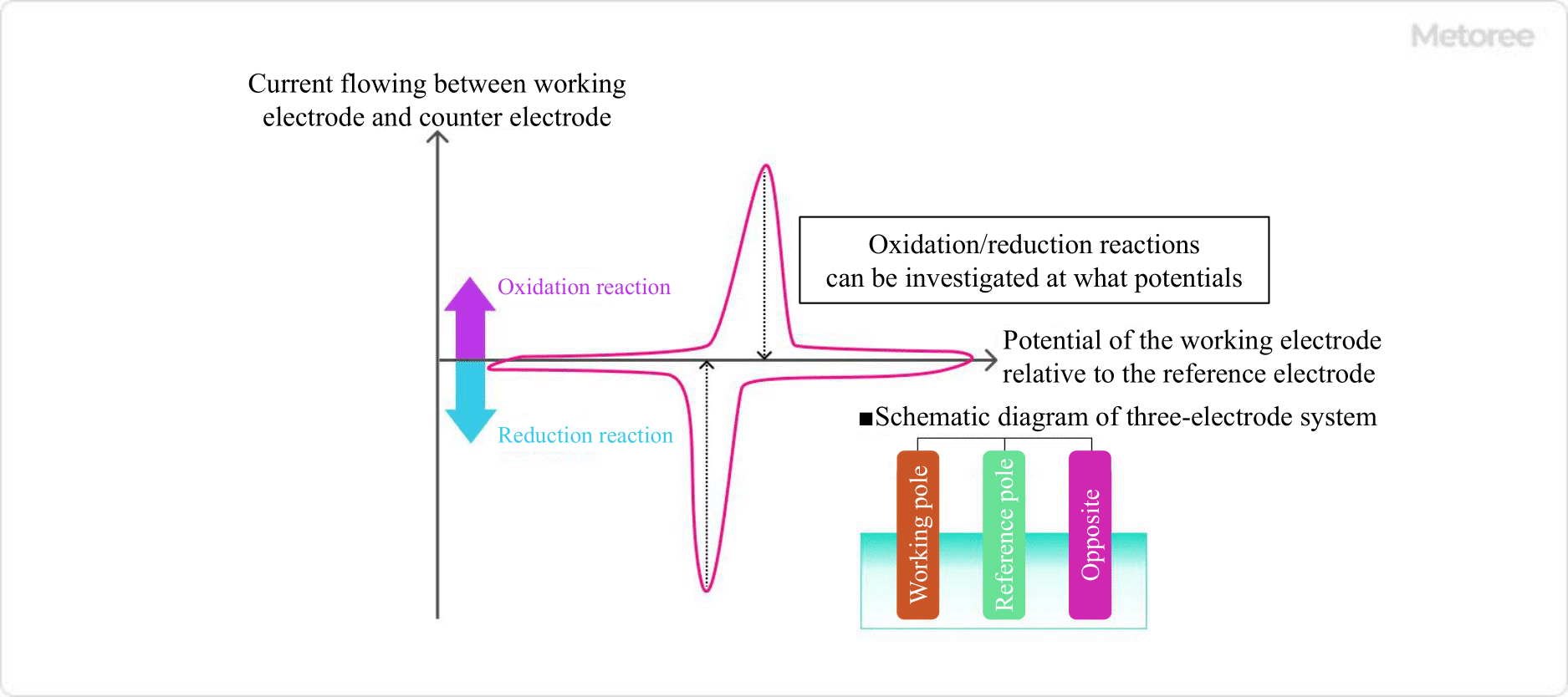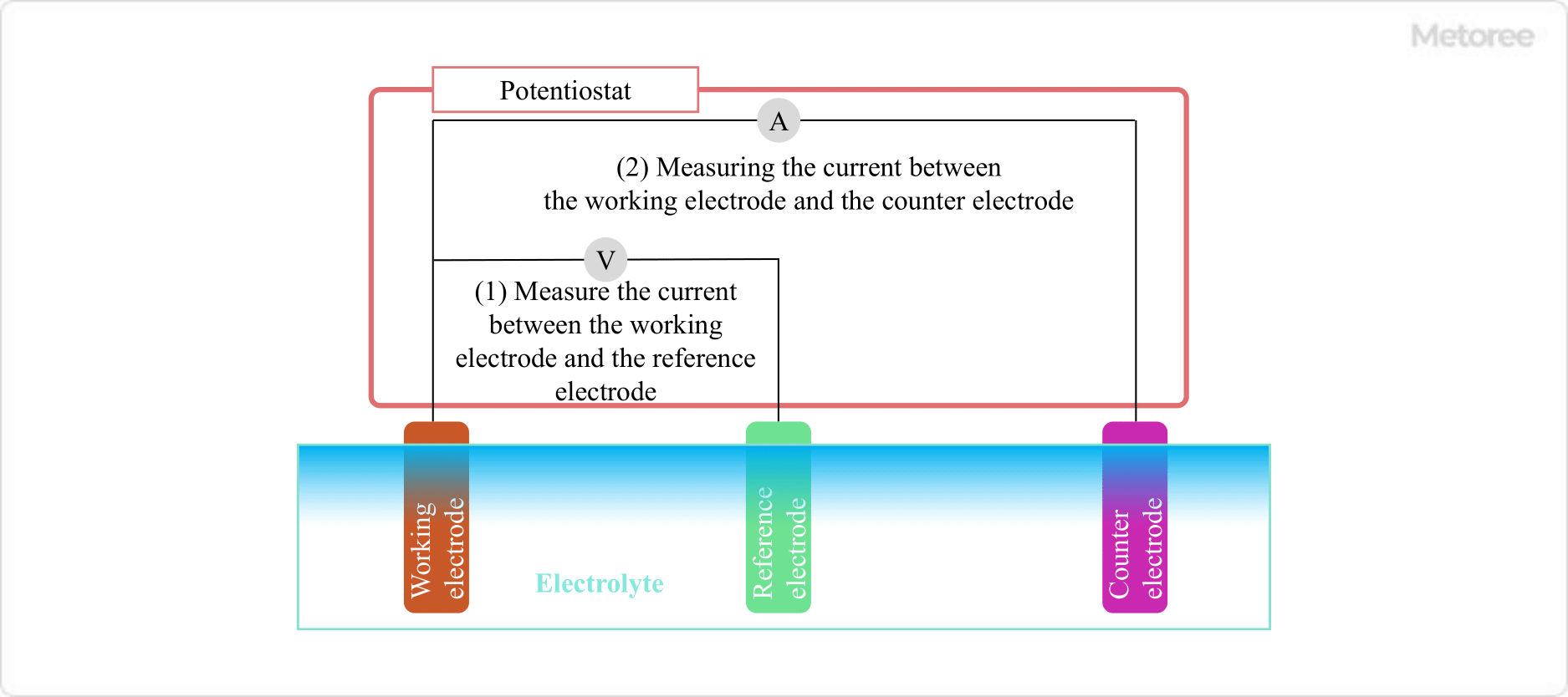











13 Potentiostat Manufacturers in 2024
This section provides an overview for potentiostats as well as their applications and principles. Also, please take a look at the list of 13 potentiostat manufacturers and their company rankings. Here are the top-ranked potentiostat companies as of April, 2024: 1.Zimmer and Peacock, 2.Phadke Instruments, 3.Sciospec Scientific Instruments GmbH.
Table of Contents
What Is a Potentiostat?
A potentiostat is a device that controls electric potential and current and measures electric potential.
In a three-electrode system consisting of a working electrode, a counter electrode, and a reference electrode in an electrolyte, it controls the voltage between the working electrode and the reference electrode and measures the current flowing between the working electrode and the counter electrode. It is used in electrochemical measurements and is often used in conjunction with galvanostats and function generators.
While galvanostats accurately control the current flowing through the electrode and arbitrarily regulate the electrochemical rate, potentiostats control the potential of the electrode and measure the current flowing through the electrode at that time. Potentiostats are used to measure the current flowing through an electrode.
Uses of Potentiostats
Potentiostats are mainly used for electrochemical measurements. In practice, potentiostats are rarely used alone but are most often used in combination with galvanostats and function generators.
Potentiostats alone can only perform constant voltage control, but when combined with these devices, they can perform voltage sweep operations and pulse outputs, and their response can be measured to gain a deeper understanding of the electrochemical characteristics of an object.
Principle of Potentiostats
The key to the potentiostat's principle is its negative feedback control using an operational amplifier.
The operational amplifier is represented by the circuit symbol shown in Figure 1 and has the following two characteristics:
- Very large internal impedance
- The voltage at the positive and negative input terminals can be regarded as the same (VIN1=VIN2)

Figure 1. Circuit symbols for operational amplifiers
The following major functions of the potentiostats are achieved by the circuit using an operational amplifier:
- Prevents current flow to the reference pole
- Controls the potential of the working electrode with respect to the reference electrode
- Measures the current flowing between the working electrode and the counter electrode
The high internal impedance prevents current from flowing to the reference pole, and since the voltage at the positive and negative ends is the same, the set voltage can be used as the voltage at the reference pole as it is.
Since the operational amplifier outputs a voltage corresponding to the flowing current, the current can be measured.
Other Information on Potentiostats
1. What Is Electrochemical Measurement?

Figure 2. Example of voltammogram
Electrochemical measurement is a measurement technique in which an electrical signal is applied to a specific sample from a power source or another circuit to induce a chemical reaction, and the response signal is used to evaluate the chemical reaction occurring inside.
A common example is the electrolysis of water. By inserting electrodes connected to potentiostats into water and applying electrical energy from an external circuit, the electrolysis reaction of water can be promoted or reversed on the working electrode. This technique can be utilized in the development of catalysts that promote the electrolysis of water.
In the voltammogram measurement, a computer is used to convert the controlled electrode potential from a digital signal to an analog signal, and the electrolytic current measured by the potentiostats is digitized and read by the computer. In this way, it is possible to determine how much current flowed in relation to the voltage change.
From the voltammogram, it is possible to determine what kind of oxidation/reduction reaction is taking place at the working electrode at each potential.
2. Reasons for Using a Three-Electrode System

Figure 3. Schematic diagram of potentiostat and three-electrode system
In electrochemical measurements, it is necessary to accurately determine the potential of reactions occurring at the electrodes. 2-electrode electrochemical measurements cannot accurately measure the potential due to the phenomenon of polarization, which occurs when current flows through both the working and counter electrodes. Polarization refers to a shift in electrode potential due to current flow in the circuit.
Therefore, a reference electrode is added as a third electrode to form a three-electrode system consisting of an action electrode, a counter electrode, and a reference electrode. No current flows through the reference electrode, and by measuring the potential difference between the working electrode and the reference electrode, the potential of the working electrode can be accurately measured.
List of 13 Potentiostat Manufacturers
*Including some distributors, etc.
Sort by Features
- Default
- Company Size: largest first
- Year Founded: oldest first
- Year Founded: earliest first
Sort by Area
- United States of America
- China
- Germany
- India
- Switzerland
- United Kingdom
-
-

-
Stanford Research Systems
Potentiostat / Galvanostat
Manufacturer Overview
Stanford Research Systems Inc., founded in 1980 and based in Sunnyvale, California, is a manufacturer of test and measurement instruments for corporate, government, and academic users. Its products include lock-in amplifiers, FFT spectrum analyzers, and mass spectrometers, and it also provides software and drivers. The company’s CS580 voltage-controlled current source can source and sink DC and AC currents from 100 fA to 100 mA and has a maximum compliance voltage of ±50 V, which is adjustable. The company accepts online orders from the US and international buyers and offers Net 30 payment terms to a majority of its global customers.
-
-
-
-

-
Gamry Instruments
Potentiostats
Company Overview
Gamry Instruments, established in 1989 and based in Warminster, PA, USA, is a manufacturer and supplier of electrochemical instrumentation and accessories. The company's product lineup includes CV - Cyclic Voltammetry Technique, Electrolysis, Electrochemical Corrosion, Battery Testing, and Biological Electrochemistry. These tools serve the appliances, electrical, and electronics manufacturing sectors. They are employed in various applications such as battery assessment, electrochemical synthesis, and corrosion analysis. Additionally, the company offers services like technical support and electrolysis.
-
-
-
-

-
Metrohm
potentiostat/galvanostat
Manufacturer Overview
Metrohm, founded in 1943 and headquartered in Herisau, Switzerland, is a manufacturer of precision instruments for chemical analysis. They offer products such as dispensing tools, Stripping Analysis (CVS) instruments, ion chromatography systems, related accessories, and more. Their products cater to various sectors, including pharmaceuticals, chemicals, and defense, which are used for the analysis and handling of chemicals. Metrohmy holds IQNet and EcoVadis Silver Recognition award for sustainability and is compliant with GDPR standards.
-
-
-
-

-
Zimmer and Peacock
Potentiostat
Manufacturer Overview
Zimmer and Peacock is a contract developer and manufacturer of electrochemical sensors and biosensor technologies founded in 2014 and headquartered in West Midlands, UK. The company is ISO 13485 certified and provides products as well as development and manufacturing services specializing in electrochemical sensors, biosensors, medical diagnostics, and in-vitro diagnostics. Its product line consists of biosensors, potentiostats, electronics, screen printed electrodes, and impedance spectrometers. The company partners with various industries and academe to develop and commercialize new sensor technologies. It serves multiple sectors, including healthcare, manufacturing, environmental protection, and more.
-
-
-
-

-
Zahner-Elektrik GmbH & Co. KG
Potentiostats
Manufacturer Overview
Zahner-Elektrik GmbH & Co. KG, founded in 1976, is a German manufacturer based in Gundelsdorf, Kronach, specializing in high-precision instruments designed for electrochemical and photoelectrochemical applications. The company's product range includes potentiostats and external potentiostats, single-quadrant electronic loads, as well as various probes and multiplexers. The company also provides potentiostats and galvanostats, along with related extensions and accessories. It further offers controlled intensity modulated photo spectroscopy (CIMPS) and controlled intensity modulated photo spectroscopy with quantum efficiency or incident photon to current efficiency (CIMPS-QE/IPCE).
-
-
-
-

-
Wuhan Corrtest Instrument Corp., Ltd
Multichannel potentiostat
Manufacturer Overview
Wuhan Corrtest Instruments Corp. Ltd., established in 2007, is a Chinese manufacturer based in Wuhan, Hubei, specializing in electrochemical instruments. Holding ISO 9001:2015 certification, the company offers single-channel, multichannel, and portable potentiostats. It also provides related accessories such as electrochemical cells, electrodes, and electrode polishing kits. The company caters to domestic and international markets, including the United States, the United Kingdom, and Japan. These products not only find applications in electrochemical analysis, electrosynthesis, and electrodeposition but also are installed in various technologies such as batteries, solar cells, and sensors.
-
-
-
-

-
XIAMEN TOB NEW ENERGY TECHNOLOGY Co., LTD.
Potentiostats
Manufacturer Overview
XIAMEN TOB NEW ENERGY TECHNOLOGY Co., LTD., established in 2012, is a manufacturer based in Xiamen, China, specializing in equipment and materials for lithium-ion batteries. The company offers lithium-ion battery and lithium-ion supercapacitor materials, production and testing equipment. Other offerings include battery mixers, battery winding, sealing, and crimping machines as well as electrode coating, slitting, and staking machines. TOB NEW ENERGY serves various industries, including electric vehicles, energy storage systems, and portable electronics. They have designed over 200 lithium-ion battery and supercapacitor production lines for companies and research institutions like Mercedes-Benz AG, Bayerische Motoren Werke (BMW) AG, Massachusetts Institute of Technology (MIT).
-
-
-
-

-
Ossila Ltd
Potentiostats
Manufacturer Overview
Ossila Ltd., established in 2009 and headquartered in Sheffield, England, is a manufacturer specializing in the development of research equipment for organic electronics. Its products support the rapid prototyping of thin film electronics, including LEDs, photovoltaics (PVs), and field-effect transistors (FETs). Its offerings encompass equipment such as spin coaters, optical spectrometers, laminar flow hoods, and solar simulators, catering to various applications across different industries. The company supplies its products to over 1000 different institutions in over 80 countries globally, and all of its equipments are backed up by its free two year warranty.
-
-
-
-

-
Sciospec Scientific Instruments GmbH
Potentiostat
Manufacturer Overview
Sciospec Scientific Instruments GmbH, founded in 2010, is a manufacturer based in Bennewitz, Germany, specializing in solutions for electrical impedance spectroscopy and other electrochemical techniques. The company's product range includes impedance analyzers, electrical impedance tomography (EIT), and electrochemical measurement technology, such as galvanostats and potentiostats. These products find applications in various research and industrial settings, covering bioanalytics and biosensors, medical and pharmaceutical sectors, as well as material research and component testings.
-
-
-
-

-
AMETEK Scientific Instruments
Single Channel Potentiostats
Manufacturer Overview
AMETEK Scientific Instruments is based in Oak Ridge, Tennessee, USA, and is an ISO 9001-certified manufacturer of precision analysis instrumentation established in 2006 as a division of AMETEK, Inc. The company produces professional electrochemical, corrosion, and material analysis instruments. These include photoelectrochemical test systems used in solar cell research, frequency response analyzers, and energy storage testing products. The company’s products are mainly used by clients in the research, power generation, and petrochemical sectors.
-
-
-
-

-
TEKTRONIX, INC.
Keithley Potentiostats
Manufacturer Overview
TEKTRONIX, INC., founded in 1946, is a manufacturer of measurement solutions used in 3D sensing, EMI/ EMC testing, high-speed serial communication, material science engineering, and Wireless & RF testing. The products include oscilloscopes & probes, signal generators, margin testers, multimeters, and analyzers. The company's products are used in advanced research, aerospace & defense, automotive, power semiconductor, and medical industries. The Bracknell Berkshire company offers calibration, repair, asset management, package assembling, and testing services following NEMA, HAlT & HASS, environmental, and shock-vibration testing.
-
-
-
-

-
Phadke Instruments
Potentiostats
Company Overview
Phadke Instruments, established in 2005 and based in Mumbai, India, is a distributor and supplier of analytical and research instruments. The company's product range includes electrochemistry equipment, water and soil testing tools, energy-related instruments, devices for sample preparation, and spectroscopy equipment. These products are pivotal for researchers and professionals engaging in advanced analytical procedures, electrochemical studies, and various material science explorations. Serving industries like research services, academia, environmental studies, and energy sectors, they ensure precision and reliability in measurements. The company offers services that enhance the utility of these products, such as electrochemical corrosion testing.
-
-
-
-

-
eDAQ
Potentiostats
-
-
Potentiostat Manufacturer Ranking
*Including some distributors, etc.Ranking as of April 2024
Derivation Method| Rank | Company | Click Share |
|---|---|---|
| 1 | Zimmer and Peacock |
17.7%
|
| 2 | Phadke Instruments |
13.6%
|
| 3 | Sciospec Scientific Instruments GmbH |
11.6%
|
| 4 | Zahner-Elektrik GmbH & Co. KG |
10.1%
|
| 5 | eDAQ |
8.6%
|
| 6 | XIAMEN TOB NEW ENERGY TECHNOLOGY Co., LTD. |
8.6%
|
| 7 | Ossila Ltd |
6.6%
|
| 8 | Gamry Instruments |
5.1%
|
| 9 | TEKTRONIX, INC. |
5.1%
|
| 10 | Wuhan Corrtest Instrument Corp., Ltd |
4.0%
|
Derivation Method
The ranking is calculated based on the click share within the potentiostat page as of April 2024. Click share is defined as the total number of clicks for all companies during the period divided by the number of clicks for each company.Number of Employees
Newly Established Company
- Sciospec Scientific Instruments GmbH: 2010 (14 years ago)
- Ossila Ltd: 2009 (15 years ago)
- Wuhan Corrtest Instrument Corp., Ltd: 2007 (17 years ago)
Company with a History
- Metrohm: 1943 (81 years ago)
- TEKTRONIX, INC.: 1946 (78 years ago)
- Zahner-Elektrik GmbH & Co. KG: 1976 (48 years ago)
Potentiostat Manufacturers in United States
*Including some distributors, etc.
Global Distribution of Potentiostat Manufacturers by Country
*Including some distributors, etc.
| Country | Number of Companies | Share (%) |
|---|---|---|
 United States of America
United States of America
|
2 | 20.0% |
 United Kingdom
United Kingdom
|
2 | 20.0% |
 Germany
Germany
|
2 | 20.0% |
 China
China
|
2 | 20.0% |
 Switzerland
Switzerland
|
1 | 10.0% |
 India
India
|
1 | 10.0% |
List of Potentiostat Products
1 product is listed.
Cons Technology Co., Ltd.
Used in all major electrochemical experiments available in Poten Shut Galvanostat EC301
Last viewed: 20 hours ago
It is the optimal high -precision potencostat (constant potential device) / galvanostat (constant current device) (constant current device). Equipp...
